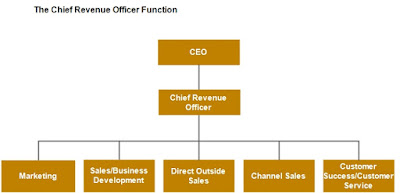Fundamental changes in the business environment have led a growing number of B2B companies to adopt new approaches for managing their revenue generating activities. While the specific approaches vary, they all arise from the recognition that successful revenue generation requires a combination of interdependent activities. Therefore, it’s important to view such activities as components of a larger revenue generation process that must be managed holistically.
The need for a new approach to managing revenue generation and growth has been driven by the convergence of several competitive forces, including:
- The growing power and independence of business buyers enabled by an abundance of easily-accessible information
- The need to provide outstanding customer experiences at every touchpoint across the entire customer lifecycle
- The emergence of “as-a-service” and other types of subscription-based (or subscription-like) business models
Meanwhile, the leaders of most B2B companies are under persistent and growing pressures to produce organic revenue growth that is consistent, predictable, and sustainable. To meet this challenge, a growing number of B2B companies have changed how they manage the business activities and processes that impact revenue generation.
The Rise of the Chief Revenue Officer
Some companies have responded to the growth challenge by creating a new C-level position – usually called the chief revenue officer – to manage revenue generating activities. The specific duties of the chief revenue officer, and the scope of his or her authority vary across companies, but the CRO is usually tasked with managing most or all of the company’s revenue-related functions.
This would typically include marketing, sales/business development, direct outside sales, channel sales, and customer success/customer service. So, a high-level organizational chart for a typical CRO function would look something like the following:
Until recently, chief revenue officers have largely been a Silicon Valley phenomenon. Most of the early adopters of the CRO role were startup or early-stage SaaS companies. As far as I can tell, there are no reliable estimates of how many (and what kinds of) companies now have a CRO. However, a Google search yesterday – limited to the preceding year – produced about 68,000 results for the term “chief revenue officer.” Most of the search results were announcements regarding the hiring of a first-time or new CRO, and most of these announcements were by technology companies.
It appears, therefore, that most CRO’s can still be found in technology companies, although it also appears that the use of CRO’s is beginning to expand beyond the technology sector.
Revenue Operations Teams
Some B2B companies have sought to address the growth and revenue management challenge by creating revenue operations teams. While this approach is still in its early stages, recent research suggests that the use of revenue operations teams is poised to grow.
Earlier this year, LeanData and Sales Hacker published the findings of
The State of Revenue Ops 2018 study. This study consisted of a survey that produced 785 responses. About three out of four of the respondents (73.6%) were sales and marketing professionals, and about 60% were manager-level or higher.
In this study, only 22.4% of the respondents reported having a revenue operations team in their company, but an additional 15.2% said they are currently building one. Most respondents in this survey have a fairly clear picture of what revenue operations encompasses. About 45% defined revenue operations as “a unified alignment of marketing, sales, and customer success,” and another 24.3% would add “operations” to the definition.
There was less consensus in the study regarding who should be primarily responsible for revenue operations success. When survey participants were asked who should “own” revenue operations metrics and key performance indicators, respondents provided a range of answers, as the following table shows:
Form Follows Function
The architect Louis Sullivan wrote that “form ever follows function,” meaning that the shape of a building should be primarily based on its intended function or purpose. When companies create a chief revenue officer position or a revenue operations team, they are attempting to make the “shape” of their organization reflect the realities of modern revenue generation. Therefore, these approaches represent an important step in the right direction, and the use of both approaches is likely to grow.






